What's behind deaths at this year's Hajj pilgrimage in Saudi Arabia?
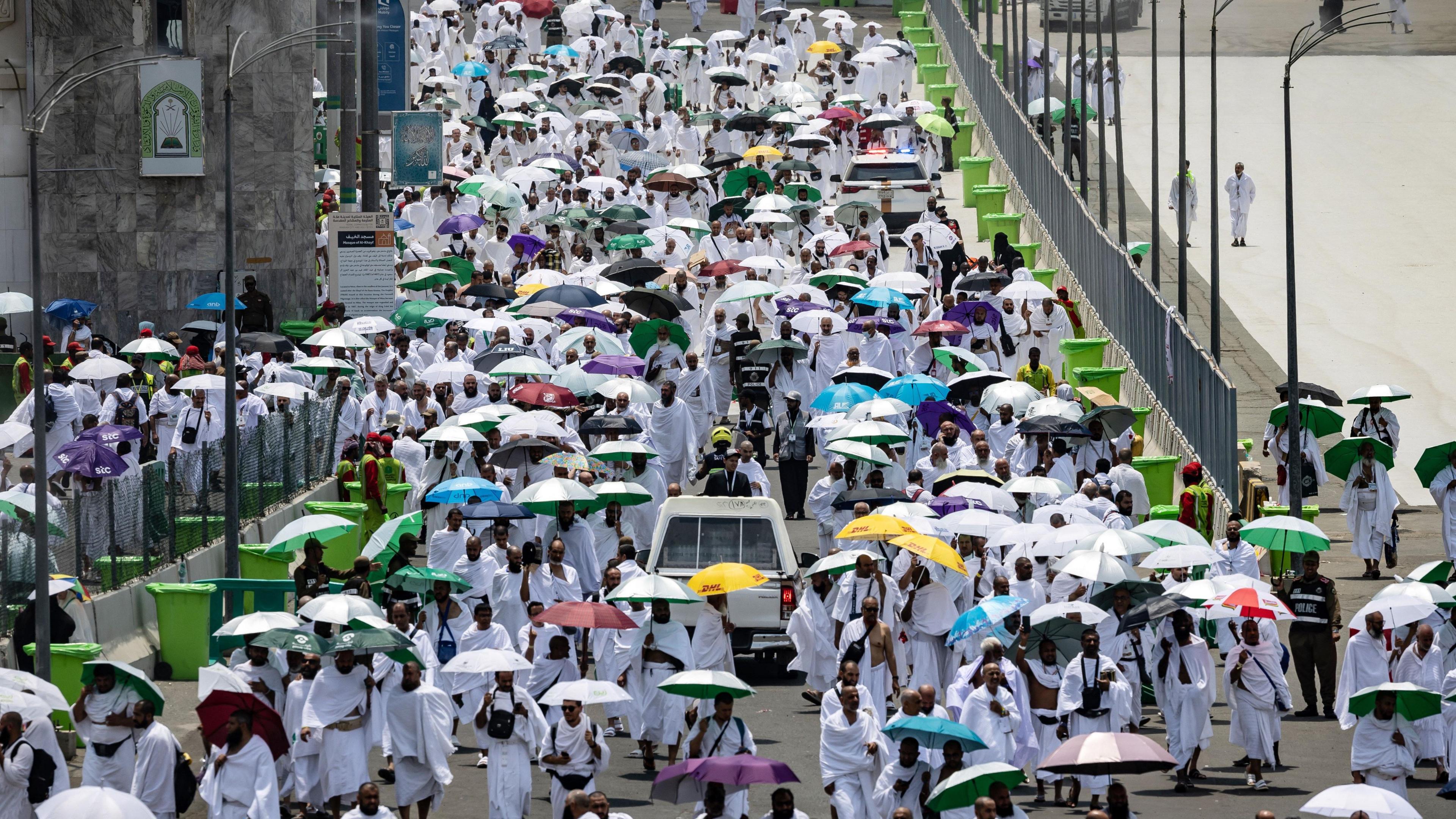
- Published
Hundreds of people are thought to have died during the Hajj pilgrimage in Saudi Arabia - most of them due to extreme heat as temperatures soared past 51C (123F).
AFP news agency quoted an Arab diplomat as saying 658 Egyptians had died. Indonesia said that more than 200 of its nationals had died. India said 98 people were known to have died.
Pakistan, Malaysia, Jordan, Iran, Senegal, Sudan and Iraq's autonomous Kurdistan region have also confirmed deaths. The US believes a number of Americans died, the Wall Street Journal reported. Friends and relatives have been searching for those missing in hospitals and posting messages online.
The fallout from the number of deaths has been growing. On Saturday Egyptian Prime Minister Mostafa Madbouly stripped 16 tourism companies of their licences and referred their managers to prosecutors for enabling illegal pilgrimages to Mecca.
On Friday Jordan said it had detained several travel agents who facilitated the unofficial travel of Muslim pilgrims to Mecca. Meanwhile Tunisian President Kais Saied fired the minister of religious affairs after local media reported 49 Tunisians had died, many of whom were unregistered pilgrims.
Hajj is the annual pilgrimage made by Muslims to the holy city of Mecca. All Muslims who are financially and physically able must complete the pilgrimage at least once in their lifetime. About 1.8 million people have taken part this year, Saudi Arabia says.
More than half of those who died were unregistered pilgrims and joined the Hajj through irregular channels, leaving them unable to access cooling facilities such as air conditioned tents and buses, AFP reports.
Saudi Arabia has increased safety measures at the Hajj in recent years, but it still faces criticism for not doing enough, particularly for unregistered pilgrims. It has not yet commented publicly on the deaths.
However AFP quoted a senior Saudi official as saying 577 people had died on the two busiest days of Hajj alone - Saturday, when pilgrims prayed in the sun on Mount Arafat, and Sunday during the "stoning of the devil" ritual in Mina.
"This happened amid difficult weather conditions and a very harsh temperature," the official said.
Here are some of the factors contributing to the deaths.
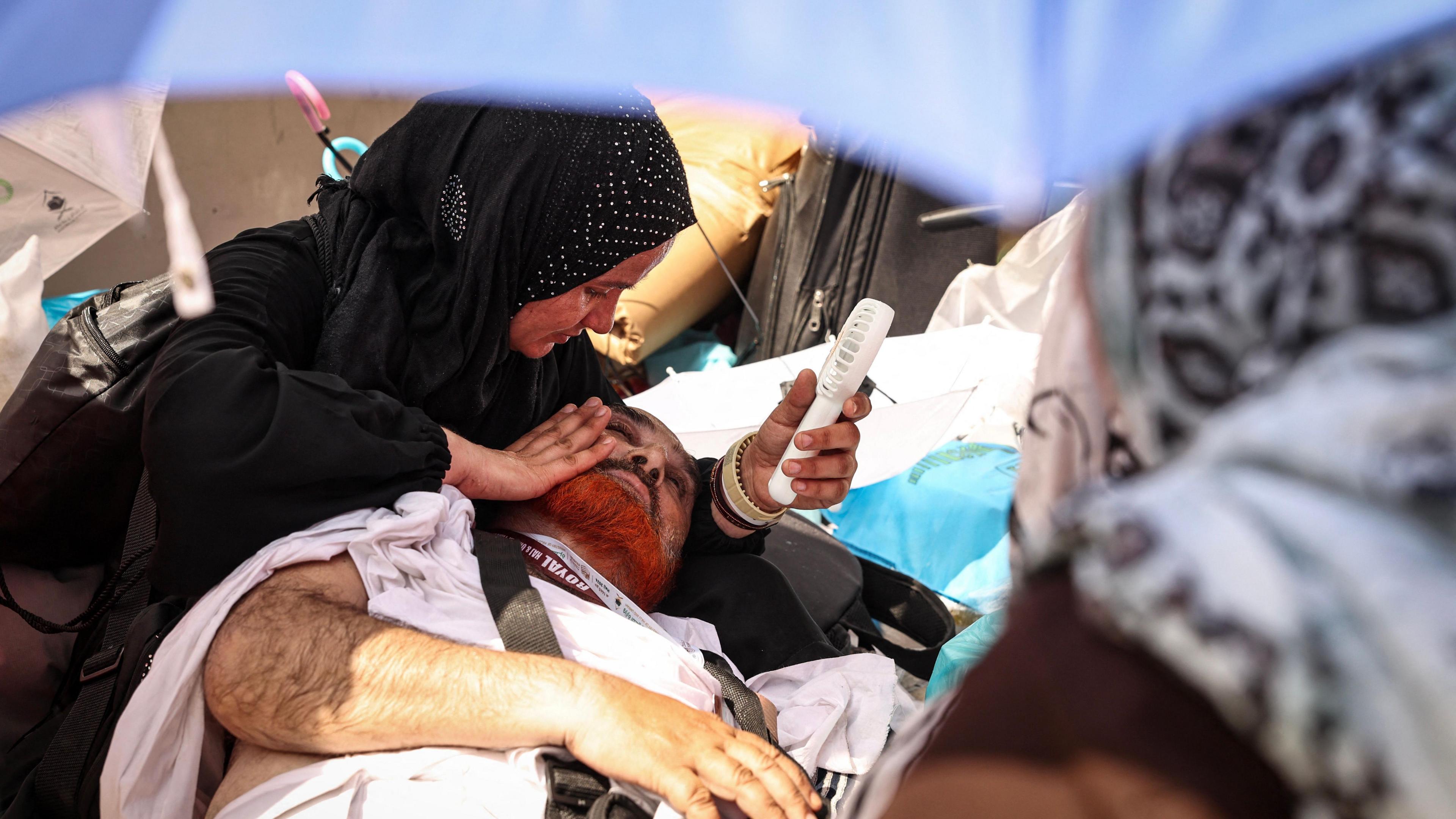
A woman uses a hand held battery run fan to cool off a man during the symbolic 'stoning of the devil' ritual
Extreme Heat
Unprecedented heatwaves in Saudi Arabia are believed to be a major factor behind the high death toll.
Despite warnings from the Saudi Health Ministry to avoid heat exposure and stay hydrated, many pilgrims fell victim to heat stress and heatstroke.
"It's only by God's mercy that I survived, because it was incredibly hot," says Aisha Idris, a Nigerian pilgrim, speaking to BBC World Service's Newsday.
"I had to use an umbrella and constantly douse myself with Zamzam water (holy water)," she said.
Another pilgrim, Naim, reportedly died from heatstroke, leaving her family searching for answers.
"Communication with my mother was suddenly cut off. We spent days searching, only to learn she had passed away during Hajj," her son told BBC News Arabic, adding they would honour her wish to be buried in Mecca.
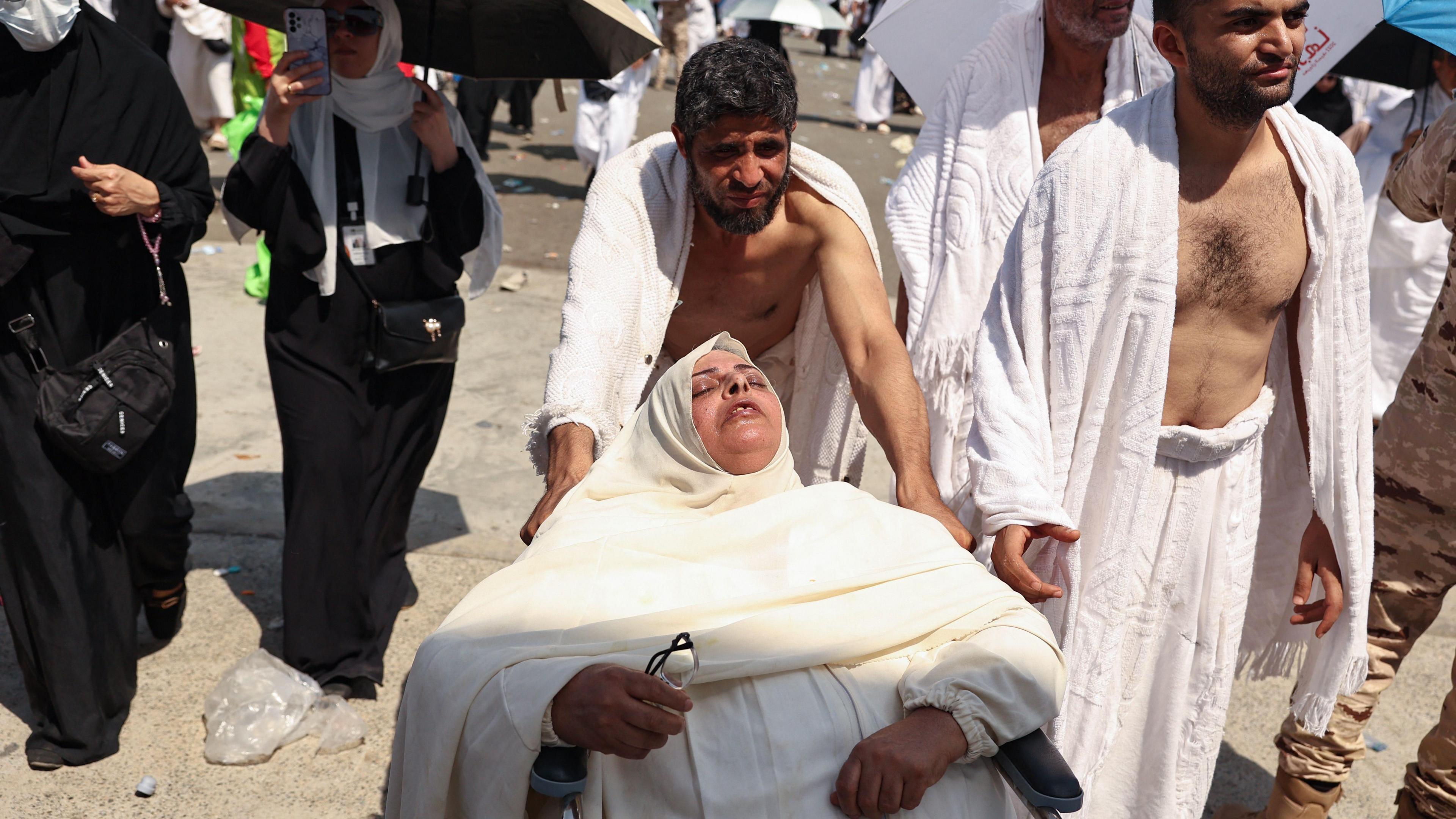
A woman affected by the scorching heat is pushed on a wheelchair as pilgrims arrive to perform the symbolic 'stoning of the devil' ritual in Mina, outside of Mecca
Pilgrims face risks due to the unfamiliar heat, strenuous physical activity, vast open spaces. Many are also elderly or unwell.
However, heat-related deaths during the Hajj are not new and have been recorded since the 1400s.
Scientists warn that global warming is due to make conditions worsen.
"The Hajj has operated in a hot climate for over a millennium, but the climate crisis is exacerbating these conditions," said Carl-Friedrich Schleussner of Climate Analytics to the Reuters news agency.
His research suggests that with a 1.5C rise in global temperatures above pre-industrial levels, the risk of heatstroke during Hajj could increase up to five times.
Overcrowding and sanitation issues
According to several accounts, mismanagement by Saudi authorities exacerbated the extreme conditions, leading to a crisis in many areas designated for pilgrims.
They say accommodation and facilities were poorly managed, with overcrowded tents lacking adequate cooling and sanitation facilities.
Amina (not her real name), a 38-year-old from Islamabad, says: "There were no air conditioners in our tents in the heat of Mecca. The coolers that were installed did not have water most of the time.

Authorities have provided a variety of methods of cooling down
"There was so much suffocation in these tents that we were dripping with sweat and it was a dreadful experience," she adds.
Fauziah, a pilgrim from Jakarta, agrees, saying, "Many fainted due to overcrowding and overheating in the tents.
She would welcome improvements but believes, “this is the best organization of the Hajj so far".
However, the Saudi Health Minister has highlighted the resources allocated to ensure pilgrim well-being.
A government statement said they included 189 hospitals, health centres and mobile clinics with a combined capacity of more than 6,500 beds, and over 40,000 medical, technical, administrative staff and volunteers.
Transportation
Pilgrims were often made to walk long distances in the intense heat, with some blaming roadblocks and poor management.
Muhammad Acha, a Hajj organizer for a private group said during the summer, a typical pilgrim may have to walk at least 15 kilometers per day. This exposes them to heatstroke, fatigue, and a lack of available water,
"This is my 18th Hajj, and in my experience, the Saudi controllers are not facilitators. They control, but they don't help," he said.
"In earlier years, the U-turns to access the tents were open, but now all those routes have been closed. As a result, an ordinary pilgrim, even if staying in a Category A tent in Zone I, has to walk 2.5 kilometers in the summer heat to reach their tent," he explains.
"If there is an emergency on this route, no one will reach you for 30 minutes. There are no arrangements to save lives, nor are there water points along these paths," Acha adds.

The Saudi Transport Authority says it arranged more than 27,000 buses to transport pilgrims
Undocumented pilgrims
To perform Hajj, a pilgrim must apply for a special Hajj visa.
But some individuals try to go on the five-day pilgrimage without the proper documentation, despite Saudi officials attempts to crack down.
Pilgrims without proper documentation often avoid authorities, even when they need help.
This issue of "unofficial Hajj" is believed to contribute to the excess deaths and authorities have blamed them for some of the overcrowding in tents.
"We suspect those using non-Hajj visas have infiltrated the Hajj areas”, says Mustolih Siradj, chairman of Indonesia’s National Hajj and Umrah Commission (Komnas Haji).
Saad Al-Qurashi, an adviser to the National Committee for Hajj and Umrah, tells the BBC: “Anyone who does not have a Hajj visa will not be tolerated and must return to [their] country.”
He notes that irregular pilgrims are identified using Nusuk cards, which are given to official pilgrims and contain a barcode for entry to holy sites.
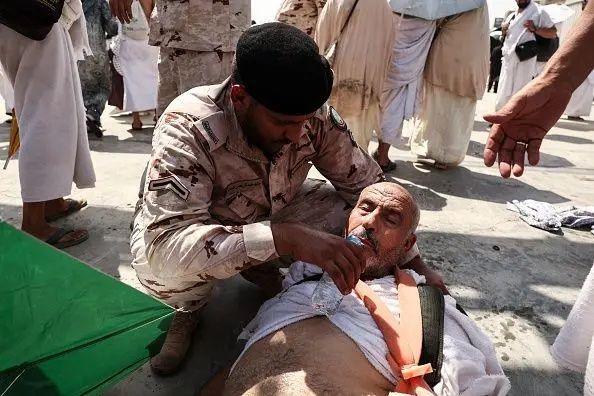
51.6C temperatures contributed to pilgrims becoming overcome by the heat
Elderly, infirm or sick pilgrims
One reason there are may be many deaths every year at the Hajj is that many pilgrims go towards the end of their life, after saving for a lifetime.
Many Muslims also go in the hopes that if they die, it is during the Hajj - as it is considered to be a blessing to die and be buried in the holy city.
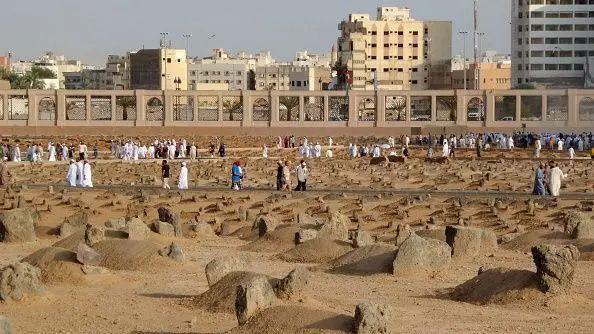
Al-Baqi Cemetery in Saudi Arabia is reportedly founded by the Prophet Muhammad, establishing it as one of the holiest cemeteries in Islamic tradition
What happens if someone dies performing Hajj?
When a pilgrim dies while performing Hajj, the death is reported to the Hajj Mission. They use wristbands or neck IDs to confirm the identity. Afterwards, they get a doctor’s certificate, and Saudi Arabia issues a death certificate.
Funeral prayers happen at important mosques like Masjid al-Haram in Mecca or the Prophet's Mosque in Medina, depending. The body is washed, wrapped, and moved in freezers provided by the Saudi government, who cover all costs.
Burials are simple, without markers, sometimes with many bodies in one place. The cemetery book lists who’s buried where, so families can visit graves if they want.
The Saudi government, with help from different groups and the Red Crescent, says it ensures “dignified and respectful burial processes”.